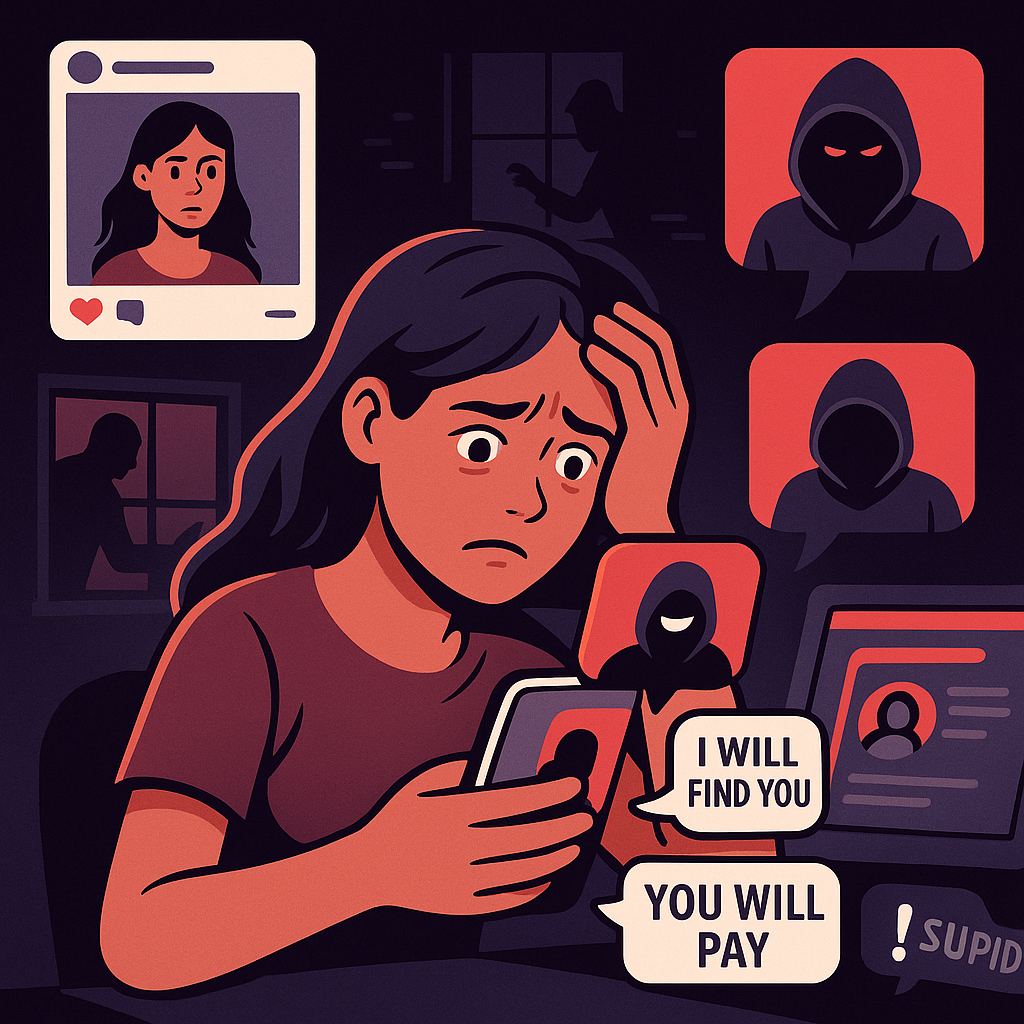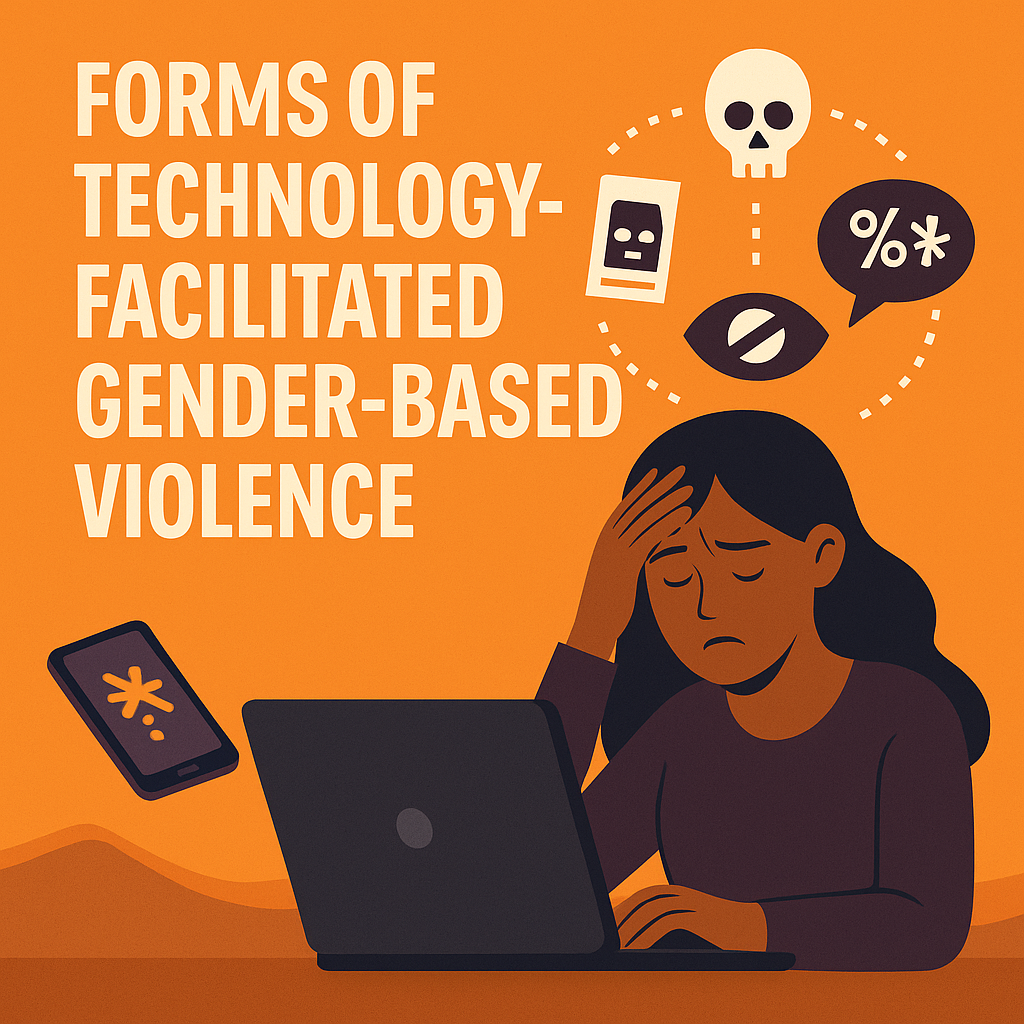
Meaning and Types of TFGBV
Technology-facilitated gender-based violence (TFGBV) describes harmful acts or behaviors committed against people using digital technologies, usually women and girls. These acts take advantage of the anonymity and connectivity that technology offers, making it easier for perpetrators to target their victims and inflict more widespread harm.
TFGBV can take place through:
- Social media platforms (e.g., Facebook, X/Twitter, Instagram, TikTok)
- Messaging apps (e.g., WhatsApp, Telegram, Signal)
- Emails, SMS, or mobile calls
- Dating platforms, online forums, blogs
- Gaming communities and livestream chats
- AI-driven platforms or content manipulation tools
Unlike physical violence, TFGBV often follows survivors across borders and time zones, leaving victims vulnerable to ongoing trauma, digital exclusion, or further victimization. The violence may be public (e.g., cyberbullying) or private (e.g., sextortion).

Forms of Technology-Facilitated Gender-Based Violence
TFGBV takes many forms, which are constantly evolving with technology. These acts often target women and girls, aiming to humiliate, silence, or control them through digital means. Some common forms include:
- Cyberstalking: Repeated online harassment and threats that instill fear or distress.
- Doxxing: Publishing private information like phone numbers, addresses, or personal data without consent.
- Non-consensual sharing of intimate images: Often referred to as "revenge porn," this involves distributing private content to shame or blackmail victims.
- Online harassment: Persistent abusive messages via social media, email, or forums.
- Deepfakes and manipulated content: Using AI to create false or harmful visual/audio content, often sexual in nature.
These forms not only cause emotional and psychological harm but also infringe on rights to safety, dignity, and expression.
Explore more on UNFPA
Effects of Technology-Facilitated Gender-Based Violence
The impact of TFGBV goes beyond the screen. Victims experience serious consequences across emotional, physical, social, and economic levels:
- Mental Health: Victims often suffer from anxiety, depression, panic attacks, and PTSD.
- Loss of Opportunities: Some withdraw from public life, education, or career advancement due to fear or shame.
- Physical Safety Risks: Online abuse can escalate to physical stalking or violence in the real world.
- Self-Censorship: Many survivors silence their voices or avoid digital spaces entirely to avoid further harm.
These effects can linger for years, diminishing self-worth, eroding trust in technology, and limiting freedom of expression and access to digital resources.
Learn more on GWPS